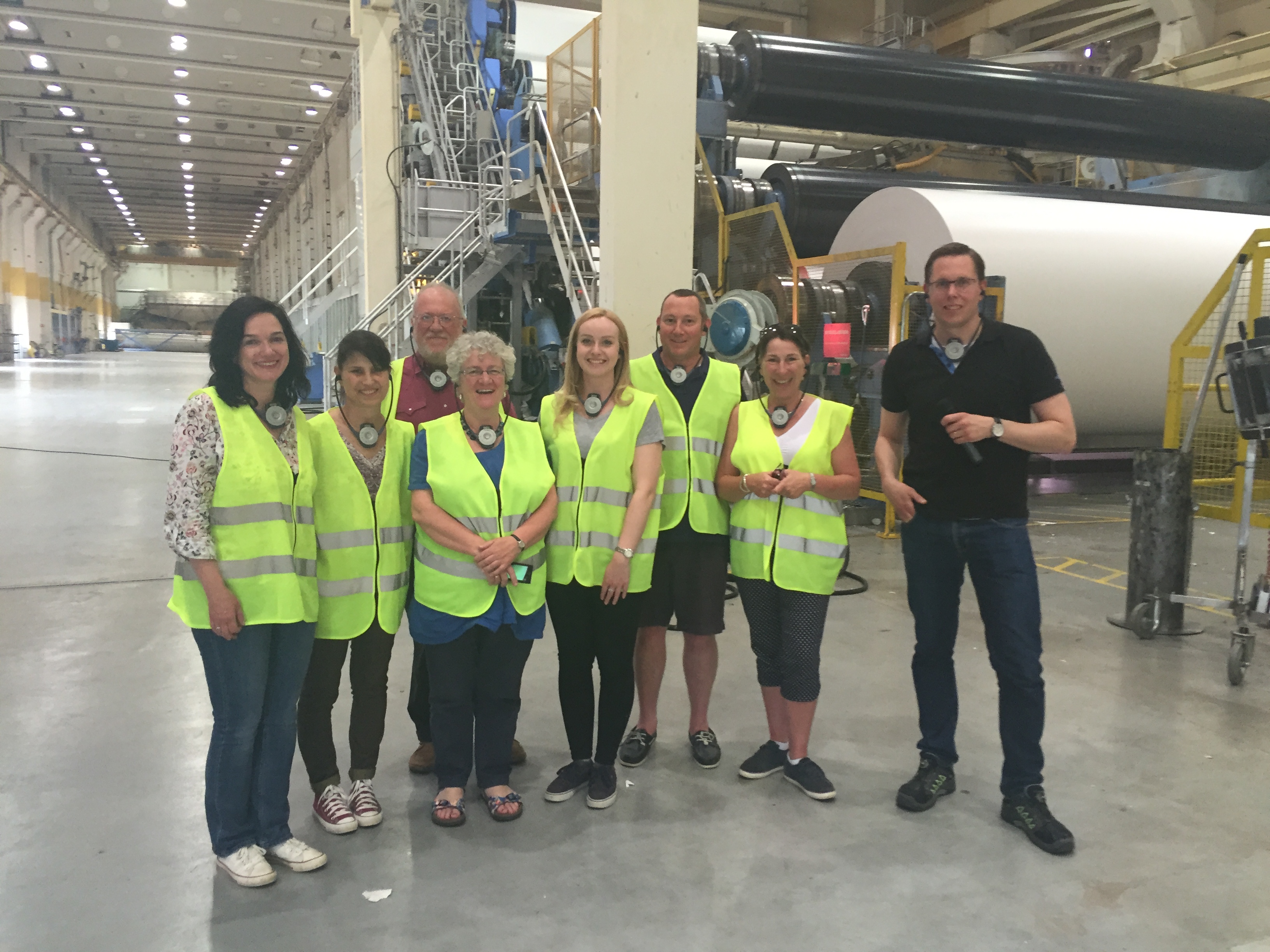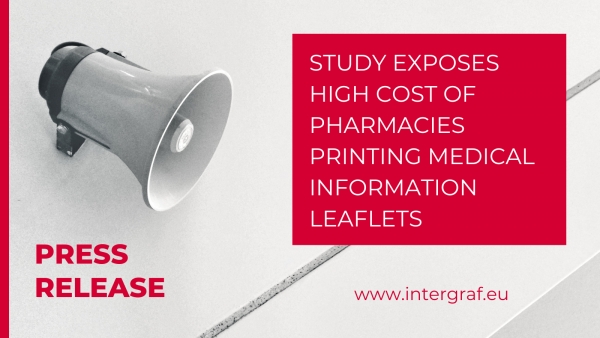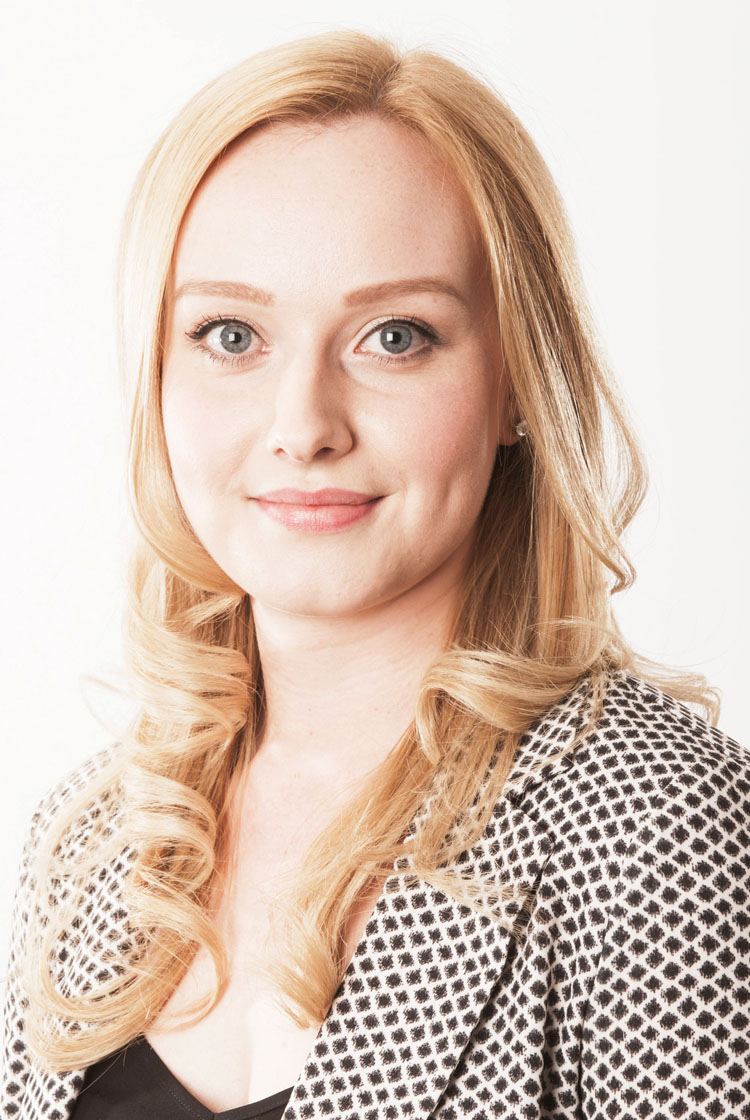30 September 2016

Following the paper trail
In the print industry we're well aware that paper is one of the most sustainable and renewable products around, but do the general public share this understanding?
Back in June, the BPIF joined three lucky members of the general public (and their partners) who'd won a fact-finding trip to a European paper mill with the Two Sides 'No Wonder You Love Paper' competition.
The Two Sides initiative promotes the sustainability of print and paper and dispels common environmental misconceptions by providing users with factual information on why print and paper is an attractive, practical and sustainable communications medium. Key messages highlighted by the campaign include the fact that Europe recycles 72% of paper consumed and European forests have been growing by 1,500 football pitches every day.
A total of 24 winners and their partners were given the chance to see first-hand sustainable forestry in action. Nine participating mills across Europe hosted the winners.
The BPIF accompanied a small group to Norrköping in Eastern Sweden to visit Holmen - a forest industry group whose business concept is to develop and run profitable business within printing paper, paperboard and sawn timber as well as forestry and energy production. 70% of Sweden is forest, and 23.2 million hectares of that is productive forest land, making it a pretty good place to make paper!
Biodiversity
Visiting part of Holmen's one million hectares of productive forest, much to the group's surprise, a large proportion of it was blackened. The fires that burnt the area were set on purpose to replicate wild forest fires that occur in nature. By burning 5% of their forest land in a controlled manner, Holmen's planners can ensure the biodiversity of the area - including animal life, and even some animals that depend on fires for survival. In fact, a huge 25% of Swedish forest is set aside for biodiversity.
So well managed are the fires that immediately next to this, tiny saplings could be seen breathing new life into the forest, providing a stark contrast. Holmen plant 35 million new trees every year in a ratio of at least 2:1 for every tree they use. As a result, there are now 50% more trees in Sweden than there were 80 years ago, even though we're often led to believe in the press that forests are dwindling.
Timber!
When it comes to harvesting the forest, Holmen's advanced computerised system of high quality digital maps identifies the exact stand that's the correct age for harvest (around 80 years old). If left to grow much longer, the tree's ability to absorb carbon dioxide deteriorates. Holmen's forests absorb 4.35 million tonnes of carbon dioxide every year.
Hi-tech machinery cuts down the trees with minimal damage to the forest floor. The ground is then scarified and seedlings are planted as soon as possible after harvest ready to grow a new generation of trees.
Sustainability
Accompanied by Holmen's laboratory manager, Linus Lehnberg, and sustainability manager, Leonard Dahlberg, the visiting group were given a comprehensive tour of Holmen's Braviken Paper Mill. Complete with its own railway line, shipping port and road network, the mill is perfectly located to accommodate the more than 500,000 tonnes of paper leaving the mill every year.
Their paper-making process has been refined to maximise environmental efficiency - practically nothing goes to waste. 99% of each tree is used (including the bark which is burnt to provide heat for the process), and the water they use from their onsite lake is purified to a level that means it goes out cleaner than it comes in. Such are the environmental efforts of Holmen that there has been a 90% drop in emissions of fossil carbon dioxide in Braviken Paper Mill since 2005.
Converts
The guests came from a range of professional backgrounds, including education, charity, biomass, finance and office products with a varied knowledge of the paper industry. All of them believed paper products and packaging to be a wasteful resource prior to the visit, but no longer.
When asked if the trip changed their opinions on the paper industry and its environmental credentials, one guest stated, "Yes! The long-term planning for a sustainable system of forestry and end-products is much more complex than most people understand."
Another commented, "The most surprising thing for me was the level of forest management and the fine-tuned science behind any decisions made concerning different areas of the forest. It was surprising to see how everything is meticulously planned and scheduled in fine detail for each area of the forest, from when/where to plant and where to set aside, to where to cultivate a particular environment and where/when to harvest. I was most surprised to realise that, strictly speaking, the forest wouldn't survive without the paper mill to finance and organise its upkeep and management."
Unfortunately, the paper industry isn't out of the woods quite yet. With the introduction of iPads and digital e-readers, newsprint demand has seen a dramatic decline in the past decade. But - as is often the case - the competition winners all said that they much prefer reading a physical newspaper/magazine/book to reading a digital alternative. Perhaps a greater understanding of the paper industry might change other people's minds too.
To find out more about the sustainability of print and paper, visit www.twosides.info
For further information on Holmen, visit www.holmen.com or www.holmenpaper.com
 Intergraf Economic News (Paper Prices) - March 2024
Intergraf Economic News (Paper Prices) - March 2024
18 March 2024
Access the latest edition of the Economic Newsletter for the European Printing Industry for data on paper consumption, and pricing data for pulp, paper and recovered paper. Data for packaging papers and board is also available with this edition.
 STUDY EXPOSES HIGH COST OF PHARMACIES PRINTING MEDICAL INFORMATION LEAFLETS
STUDY EXPOSES HIGH COST OF PHARMACIES PRINTING MEDICAL INFORMATION LEAFLETS
7 March 2024
Intergraf welcomes the release of a study by our partner MLPS (Medical Leaflet = Patient Safety), a subgroup of the European Carton Manufacturers Association (ECMA) shedding light on the potential economic costs associated with the proposed use of Print on Demand (PoD) leaflets in the pharmaceutical legislation revision.

The BPIF is the printing industries champion. By becoming a member you join a diverse and influential community. We help you solve business problems, connect you to new customers and suppliers and make your voice heard in government.
Call 01676 526030









